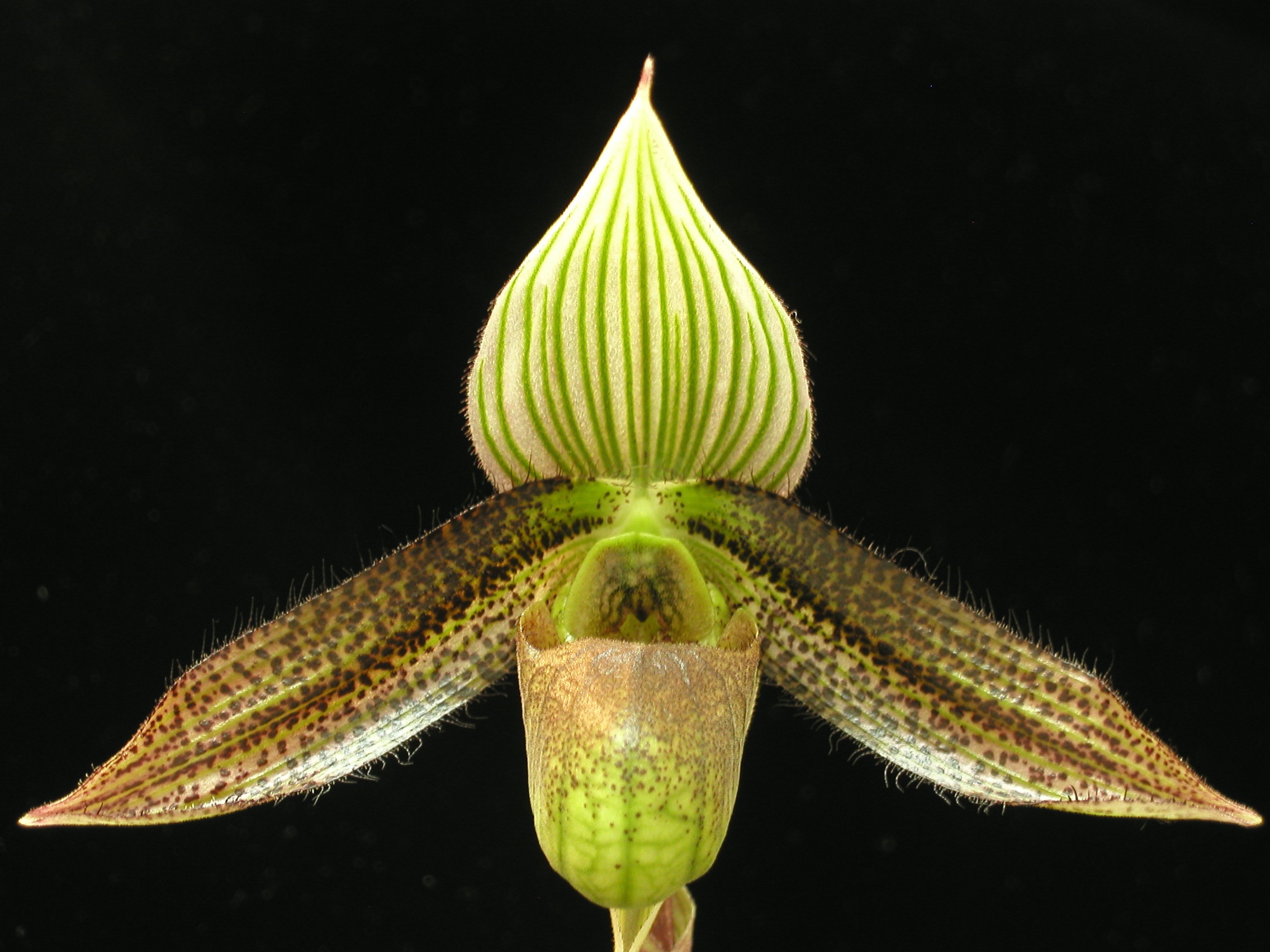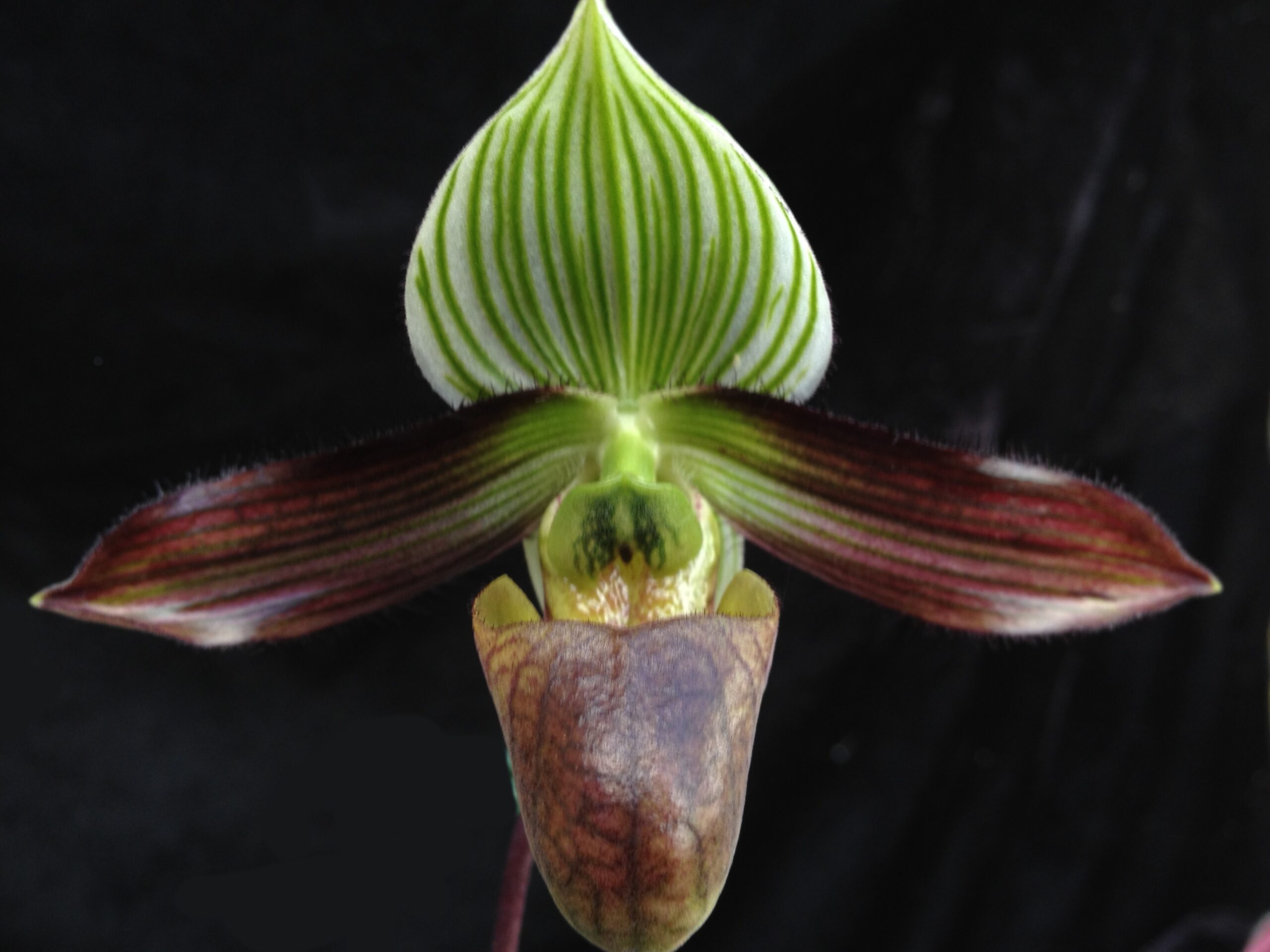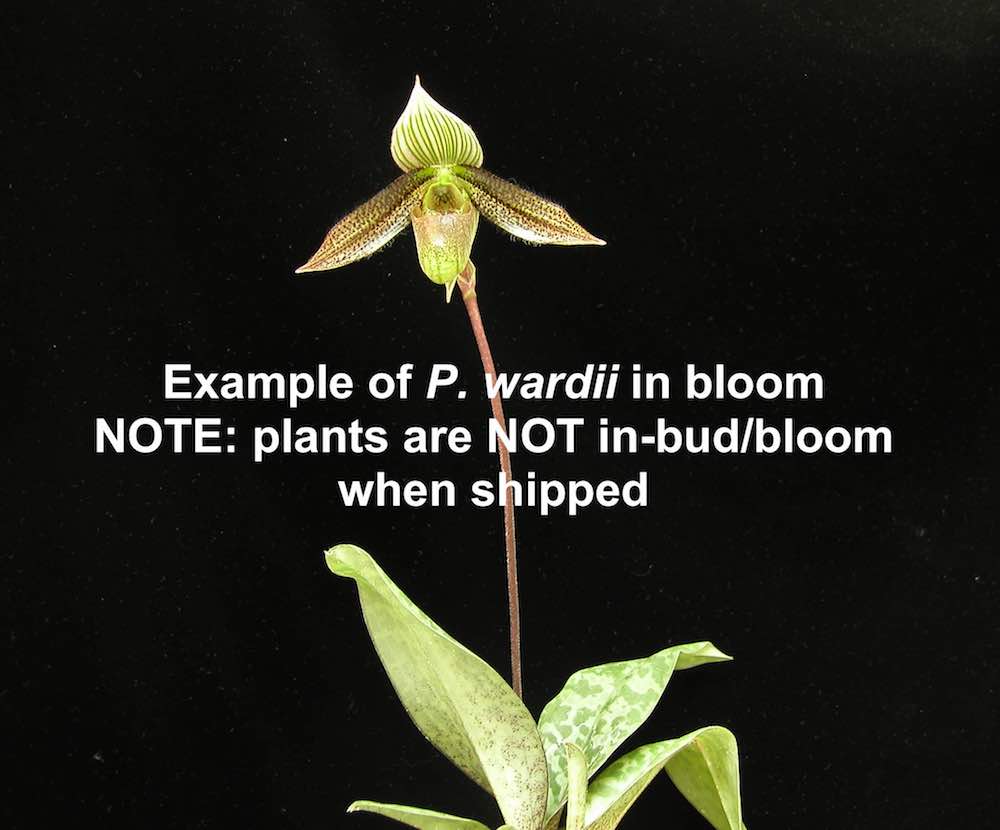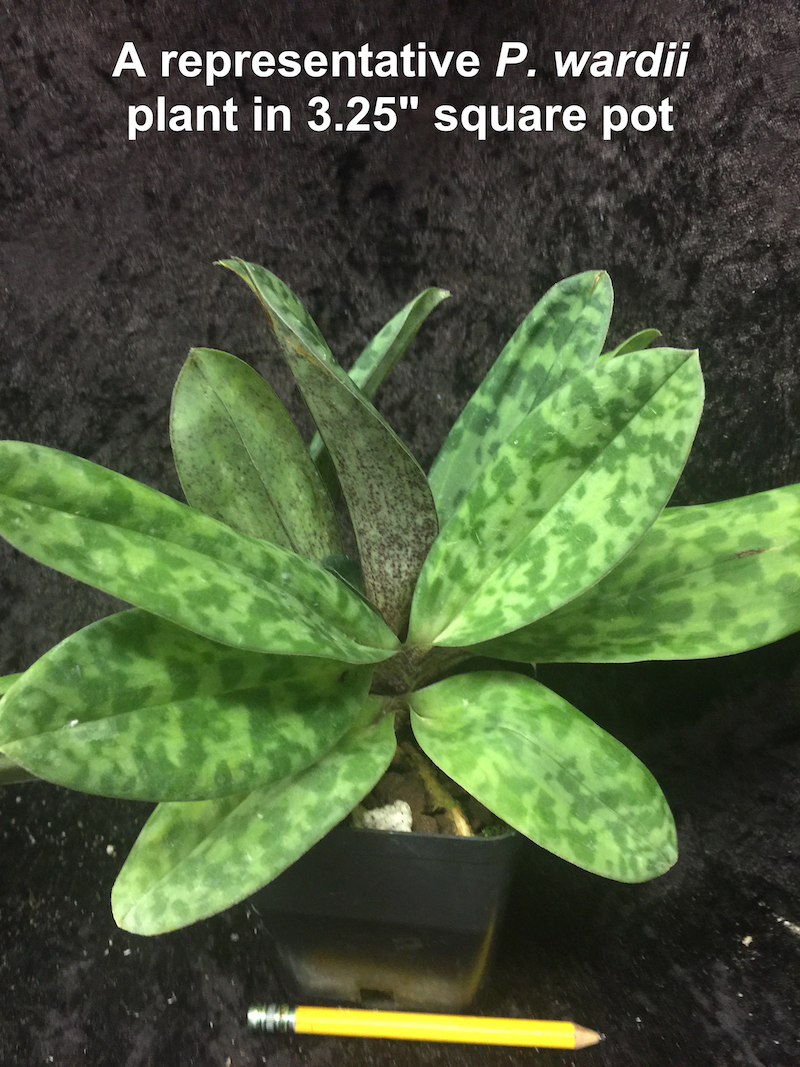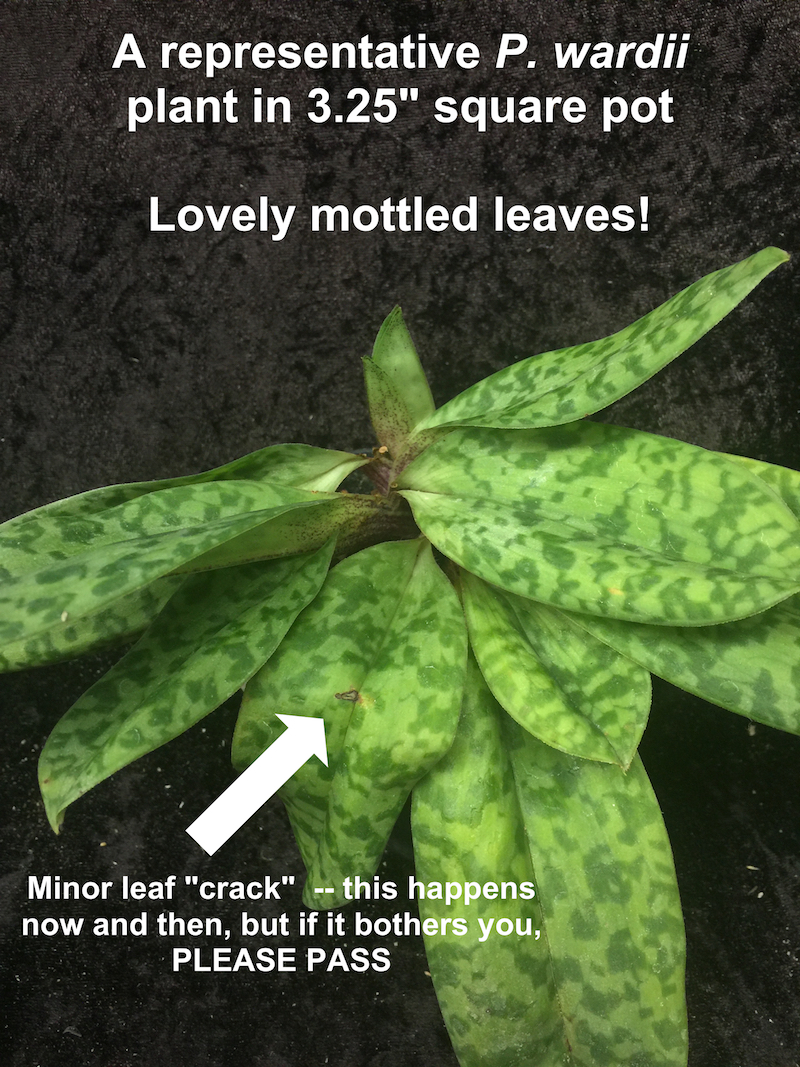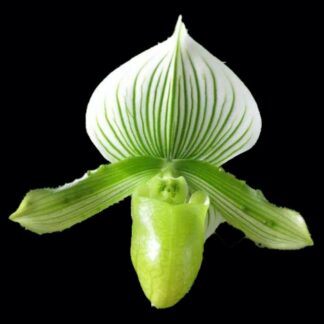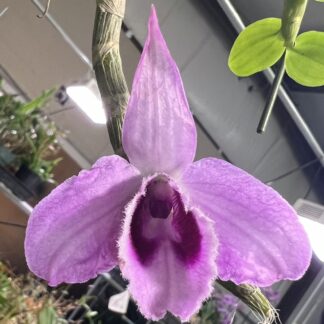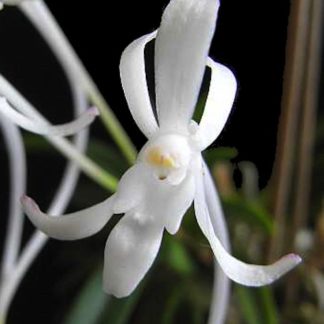Description
IMPORTANT NOTE: these plants are NOT IN BUD/BLOOM when shipped. PLEASE look at all the pictures in this listing so you know the condition/size of plant you’ll be getting.
If all the lady slipper orchids species were students in a high school, Paphiopedilum wardii would not be one of the popular kids.
Homecoming King and Queen would be Paph. rothschildianum and Paph. sanderianum, respectively; Paph. spicerianum would be the class clown, Paph. hirsutissimum would be the hairy 15-year old boy already growing a full beard, Paph. kolopakingii the giant line-backer towering over everyone else, Paph. delenatii the kind girl who’s friends with everyone, Paph. schoseri would be the one that no one notices or remembers, Paph. fairrieanum would be the artsy kid, and Paph. venustum the super brainy kid (well, its pouch does look like a miniature brain). Paph. wardii would be the dark, brooding kid who’s actually pretty cool when you get to know him, but his saturnine demeanor keeps him out of the popular kids’ clique. Not that he cares, of course. And there are plenty who actually find his foreboding presence powerful and strangely…attractive. Think Phantom of the Opera. Dracula. Darth Vader.
A good P. wardii is a dark P. wardii, and there was an outstanding clone called ‘Vader’ at the famed Orchid Zone; lovers of dark forms and flowers will be pleased to know that these very wardii plants do derive from OZ ancestry.
Here in the real world, P. wardii comes from the jungles of Burma and southwestern China. It is actually very easy to grow, and its mottled leaves make for a lovely display plant when not in bloom. It is named after its discoverer, Frank Kingdon Ward, one of the great plant hunters of the early 20th century, who discovered many new species of plants over a career spanning five decades and 20 expeditions into the jungles of Asia. On top of being a great explorer, he’d been a soldier, a spy, a diplomat, and a prolific writer of his experiences hunting plants. Do you like Rhododendrons? Kingdon-Ward had a big role in making them popular. Heard of the blue poppies of the Himalayas? He discovered them. In fact, the proverbial English garden would be a good deal less rich and colorful but for the incredible efforts of this real-life Indiana Jones. Serious students of plants know that behind almost every plant, there is an interesting story of how it was discovered, and Frank Kingdon-Ward had a lot of stories to tell in his amazingly adventurous life.
He originally found this species in the 1920s, but it took him another 20 years before he was able to find it again. Fortunately, century later, a few clicks on your computer/phone, and Paph. wardii will be delivered right to your door. I wonder what Frank Kingdon-Ward would have thought of that?
